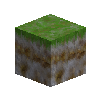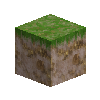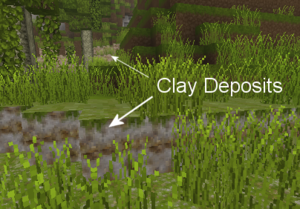Clay/fr: Difference between revisions
(Created page with "__TOC__ ==Natural Generation== 300px|right L\''''Argile''' sont un ensemble de blocs terrains créés durant la génération du monde. L'argile bleu...") |
(Created page with "=== Types d'argile === Il y a two type de blocs d'argile : L'Argile bleue (d'apparence bleutée avec des taches) et l'Argile réfractère (d'apparence beige avec des taches)....") |
||
| Line 26: | Line 26: | ||
}} | }} | ||
=== | === Types d'argile === | ||
Il y a two type de blocs d'argile : L'Argile bleue (d'apparence bleutée avec des taches) et l'Argile réfractère (d'apparence beige avec des taches). Les joueurs peuvent trouver des gisements d'argile dans les zones climatiques tempérées du monde. | |||
=== Grass Variants === | === Grass Variants === | ||
Revision as of 13:33, 20 March 2022
| Blue clay in soil | |

| |
| Matériau | Soil |
| Empilable | 64 |
| Si brisé(e), donnera | 4-5 Blue clay |
| Blocs | |
| Fire clay in soil | |

| |
| Matériau | Soil |
| Empilable | 64 |
| Si brisé(e), donnera | 4-5 Fire clay |
| Blocs | |
Natural Generation
L\'Argile sont un ensemble de blocs terrains créés durant la génération du monde. L'argile bleue et l'argile réfractère peuvent se trouver sous le même climat. L'argile bleue est plus commune que l'argile réfractère mais cette dernière se constitue généralement en gisements plus grands.
| Paramètre | Minimum | Maximum |
|---|---|---|
| Température | 3 | 40 |
| Pluie | 0.27 | 1 |
Types d'argile
Il y a two type de blocs d'argile : L'Argile bleue (d'apparence bleutée avec des taches) et l'Argile réfractère (d'apparence beige avec des taches). Les joueurs peuvent trouver des gisements d'argile dans les zones climatiques tempérées du monde.
Grass Variants
Clay blocks have grass coverage variants and may appear as "bare clay" with a surface colored according to the clay type (no grass), or a green top surface, aka "grass block". Depending on climactic conditions, grass coverage appears sparse (patchy green) on clay blocks. Tall grass may also grow/spawn on "grass" blocks.
Harvesting
Clay blocks may be removed by breaking with an empty hand or using any tool, though a shovel is a faster method to harvest clay blocks. When broken, clay blocks drop 1-3 units of clay, which stack to 64 and may be carried in player inventory, or stored in stationary containers. Clay blocks may NOT be harvested intact and replaced elsewhere.
Usage
Blue Clay
Blue clay can be used to form clay bricks or hardened clay blocks. Blue clay is primarily used to form pottery items and molds in conjunction with the clay forming mechanic. For more information on creating pottery items, see the clay forming guide.
Fire Clay
Fire clay may be substituted for Blue clay in any of the uses named above, but only bricks made of fire clay (fire bricks) can be used to create the bloomery.
Storage
Clay blocks technically stack to 64 but they cannot be obtained through normal survival gameplay.
| {{{title}}} | |
|---|---|
